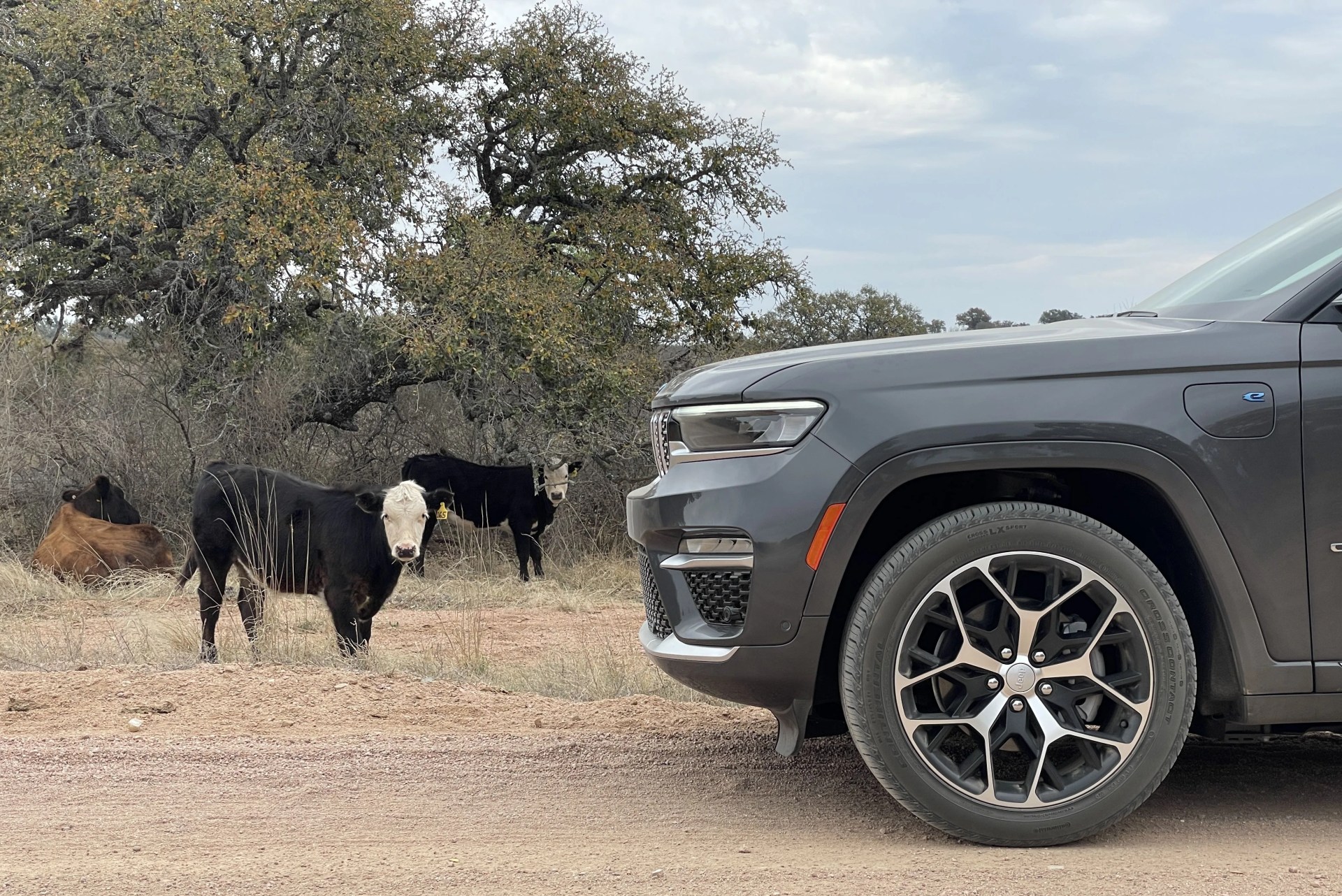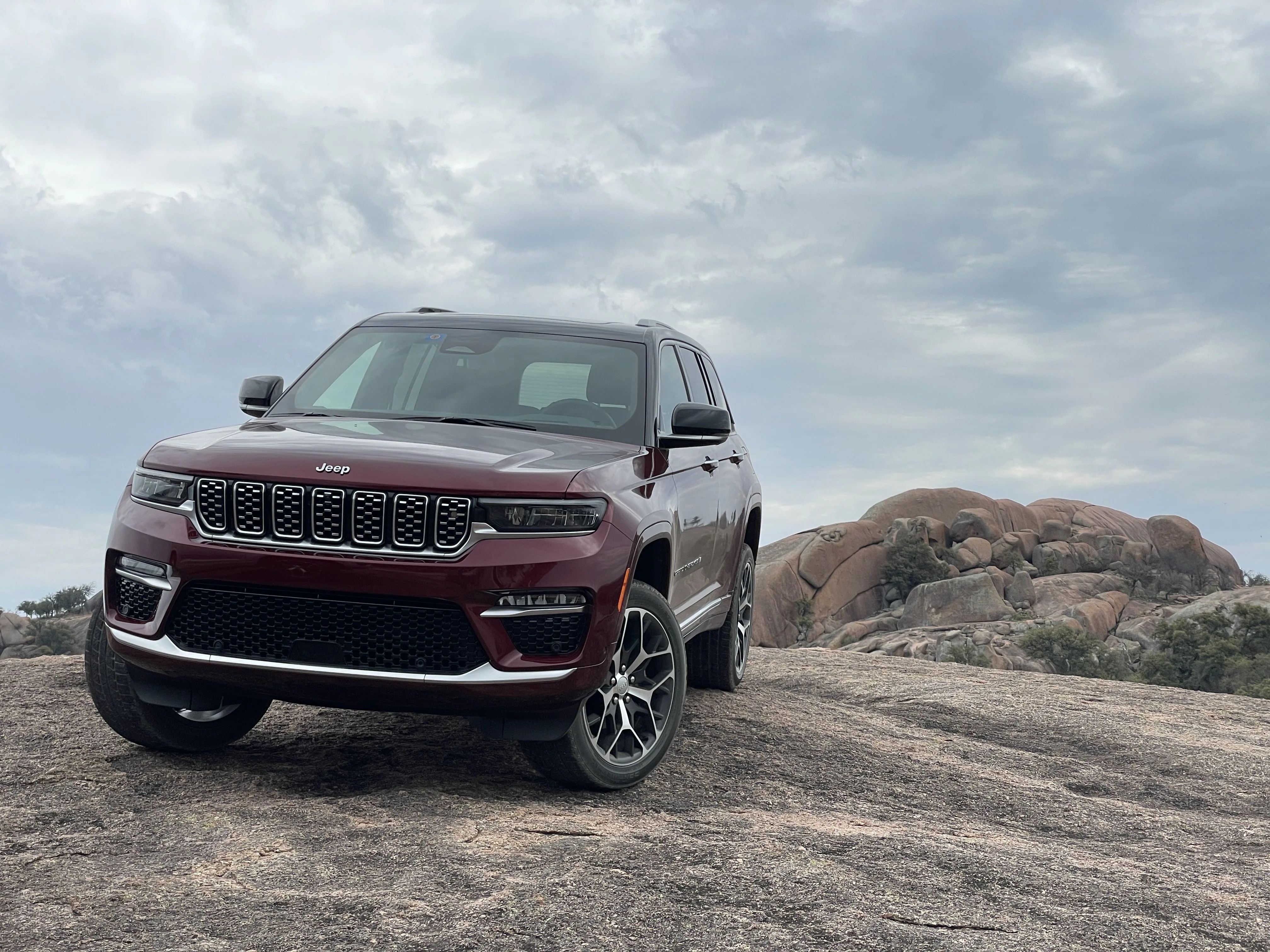Strange as it may seem, there really aren’t that many plug-in hybrid SUVs out there. Then again, maybe not; there really aren’t many PHEVs on sale in America, period — especially considering how good a fit they are for many buyers, with their combination of zero-emission, low-cost commuting and long-trip flexibility. Many a carmaker doesn’t even bother offering them, and many that do only serve up one or two — pity rides to assuage the EPA and environmentalists.
Credit to Jeep, then, for not just letting the plug-in hybrid powertrain found under the hood of the Wrangler 4xe languish there. For 2022, the company’s super-popular Grand Cherokee — fresh off its best sales year ever last year — is gaining the same hybrid powertrain, in hopes of bringing short-range zero-emissions travel to buyers who might want something a little more mainstream than the Wrangler…as well, of course, as bringing down Jeep’s average corporate fuel economy.
To find out how well this new PHEV SUV lives up to its billing, we ventured deep into the heart of Texas to Austin, where we sampled the Grand Cherokee 4xe in a variety of forms on a number of surfaces — paved and unpaved, urban and rural, empty and crowded alike. How’d it do? Read on.
What, exactly, is the Grand Cherokee 4xe?
 Will Sabel Courtney
Will Sabel CourtneyAs mentioned, it’s the second Jeep — the second Stellantis product — to pair up the 2.0-liter turbocharged inline-four with a 17-kWh lithium ion battery pack and an electric motor. Jeep claims the system will deliver 25 miles of range in all-electric mode and still get the best combined fuel economy of the Grand Cherokee lineup when depending on the gas engine alone – along with packing more horsepower than Jeep’s 5.7-liter Hemi V8 and as much torque as the 6.4-liter eight-pot muscle car motor found in the crazy Wrangler 392.







